As the highest and most famous mountain peak in Japan, climbing Mount Fuji is one of the adventures that should be on the bucket list of every traveler in Japan! Otherwise known as Fuji-san, it is an active volcano that is regarded as one of Japan’s three sacred peaks and iconic sites.
Despite standing at 12,388 feet (3,776 metres) high and its relatively steep slope, it is definitely possible for beginners to climb up to the top.
Thanks to the availability of directional signs, mountain huts, and medical centers. In fact, over 300,000 people (including some inexperienced hikers I know) climb Mount Fuji every year, so don’t worry if you’re not a frequent hiker.
Table of Contents
The Complete Guide to Climbing Mount Fuji
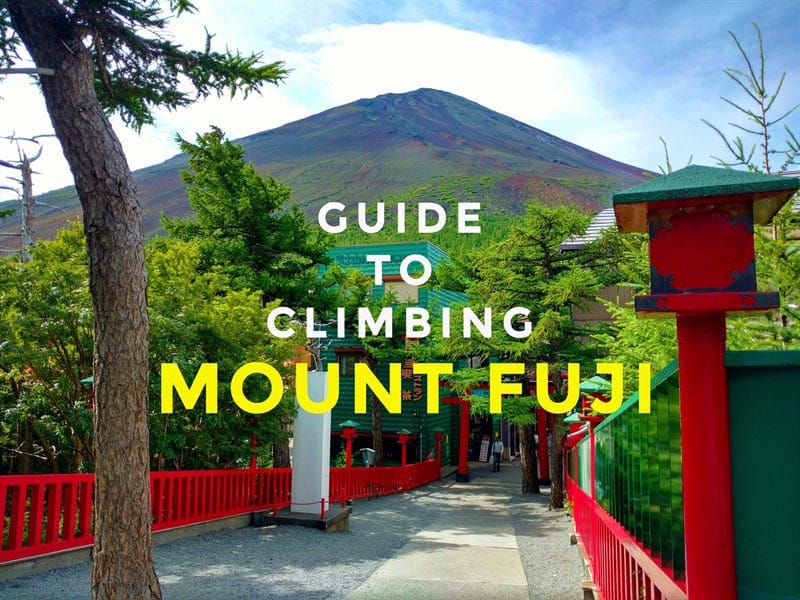
Having just recently climbed the mountain with a friend, I decided to put together a guide for those who are thinking about doing the same.
The entire trip lasted for two days, with an overnight stay at one of the mountain huts on the peak itself. Here’s how my trip was like!
Duration of Mount Fuji hike
The time it takes to climb Mount Fuji depends on the trail you take.
- Yoshida Trail: Ascend: Up to 6 hours – Descend: Up to 3.5 hours
- Fujinomiya Trail: Ascend: Up to 5 hours – Descend: Up to 2 hours and 45 minutes
- Gotemba Trail: Ascend: Up to 7.5 hours / Descend: Up to 3 hours
- Subashiri Trail: Ascend: Up to 5.5 hours / Descend: Up to 3 hours.
DAY 1: Mt. Fuji Trek
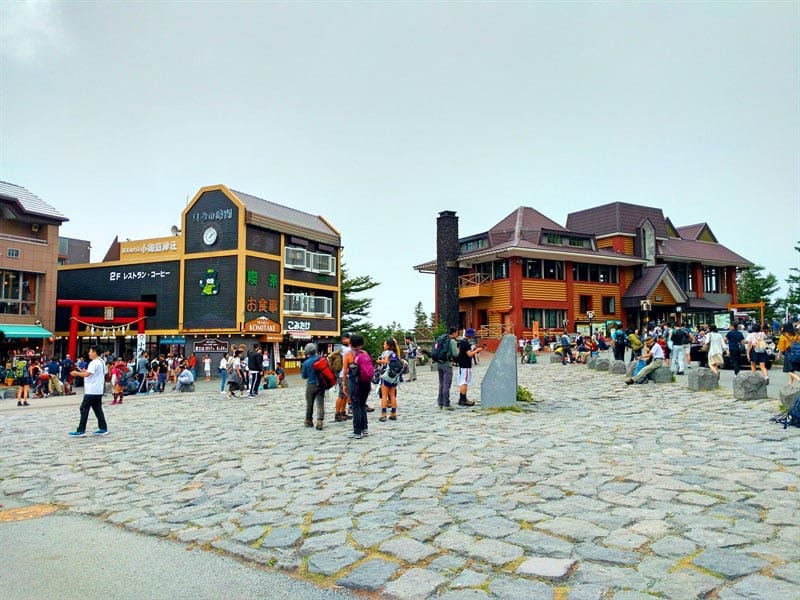
We went to Shinjuku Expressway Bus Terminal where our bus departed from at 10.45 am. With at least two hours on the bus, we managed to catch up on some sleep!
Finally, we arrived at Fifth Station at about 1.20 pm!
The Fifth Station is the starting point for climbing Mount Fuji. Over here, there’s a waiting lounge, and a few souvenir (omiyage) stores and restaurants to check out. Check out: The Best Day Trips From Tokyo
During the climb, you will reach the Sixth, Seventh, Eighth, and Ninth stations first before eventually arriving at the summit.
The Trail We Chose
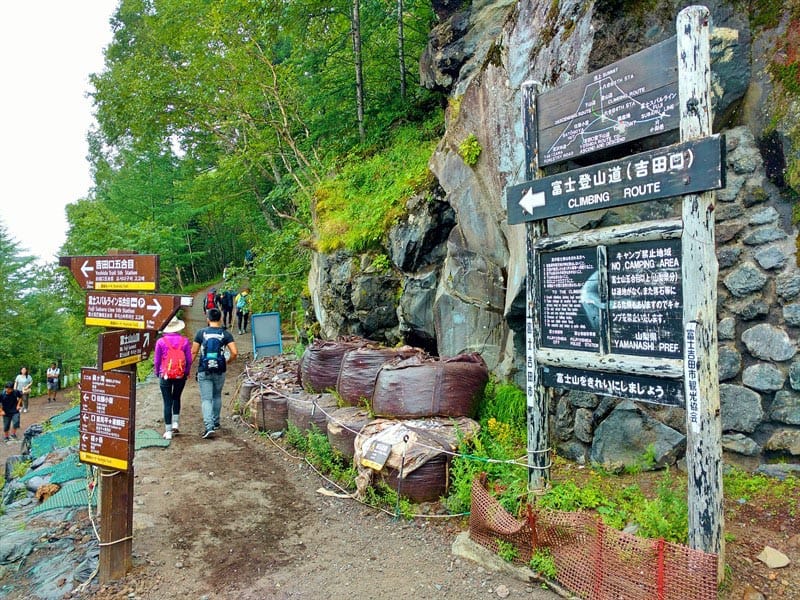
We started the climb via the Yoshida Trail, which is only one of the four trails that will lead to the summit.
This is the most popular (and thus, most crowded) route, particularly because of the ease of access from Tokyo by public transportation.
- The other three trails are: Fujinomiya trail, Gotemba trail, and the Subashiri trail.
As we made our way from the Fifth to Sixth station, it was too cloudy and blurry to see anything and take good quality pictures.
Souvenirs in stores at the Fifth Station are actually not that expensive
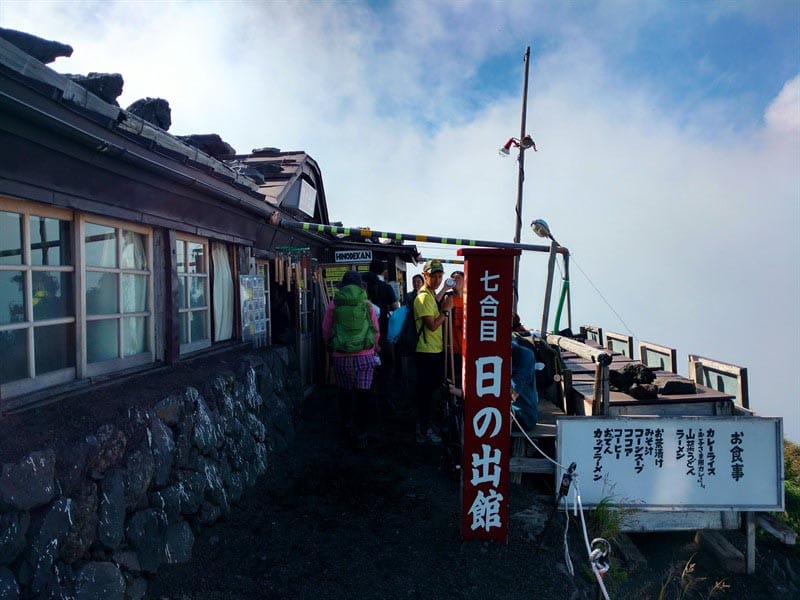
Although eating and drinking at cafes and restaurants located on the Fifth Station can be a ripoff, souvenirs sold at the Fifth Station are surprisingly not as pricey as I thought.
This is true especially for food souvenirs. For instance, a fairly decent sized box of Japanese-style chocolates or red bean cakes cost around 650 yen. (approx $6USD)
It was still blurry as we proceeded on from the Sixth station.
But soon the clouds started to clear, and it was sunny again. We managed to enjoy some great weather during the climb to the Seventh Station!
Climbing Mount Fuji is a slow and steady trek
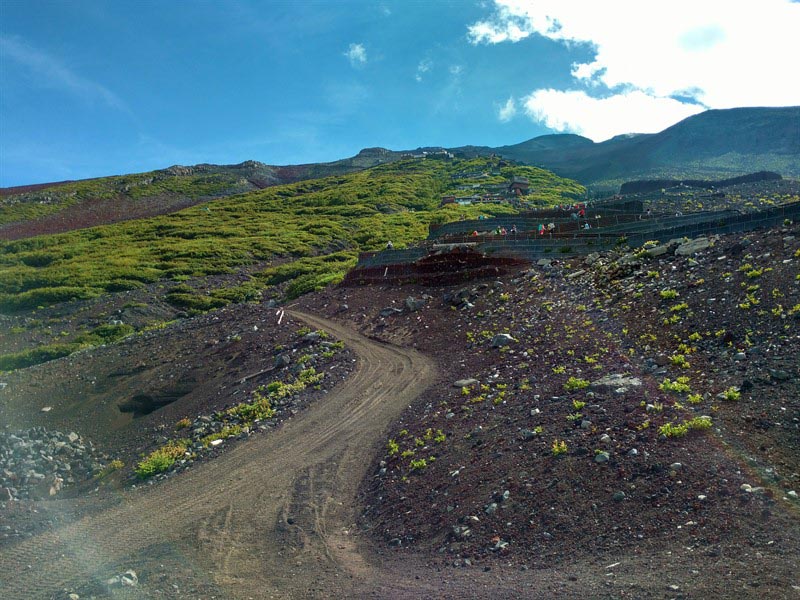
It felt like an eternity while climbing from the Sixth to the Seventh Station.
But there’re seriously some great views while making our way to the Seventh Station!
Although the route we took was the most crowded one, seeing fellow hikers heading towards the same way and having the same goal really served as a great motivation for us to keep going!
I couldn’t imagine how things might have turned out if we were to choose the less popular climbing trail.
A Bottleneck at the path
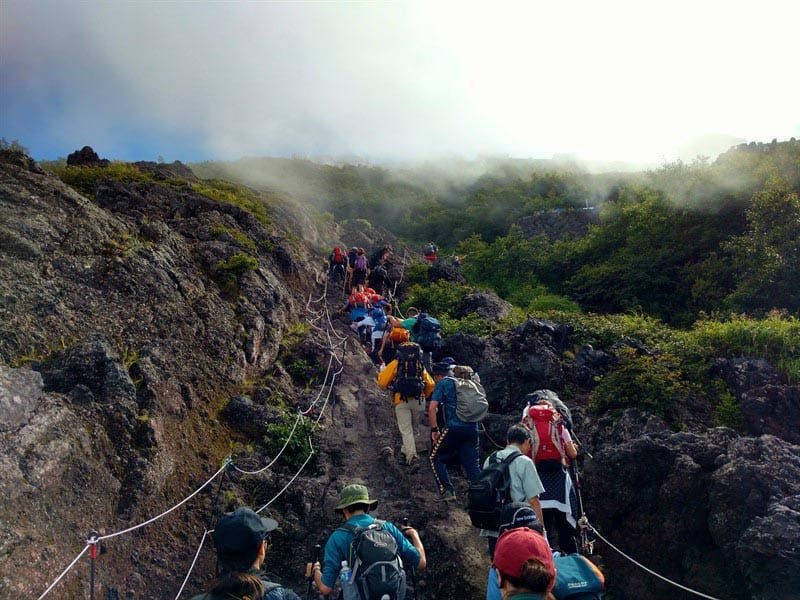
At one point between the Sixth and the Seventh Station, the path was so narrow that only one climber would be able to pass through one at a time. Everyone had to wait for their turn to pass through that path.
As we passed through the Seventh Station, it got less crowded. Also, the path to the Eighth station was shorter compared to those between the previous stations.
In no time, we arrived at the Eighth Station!
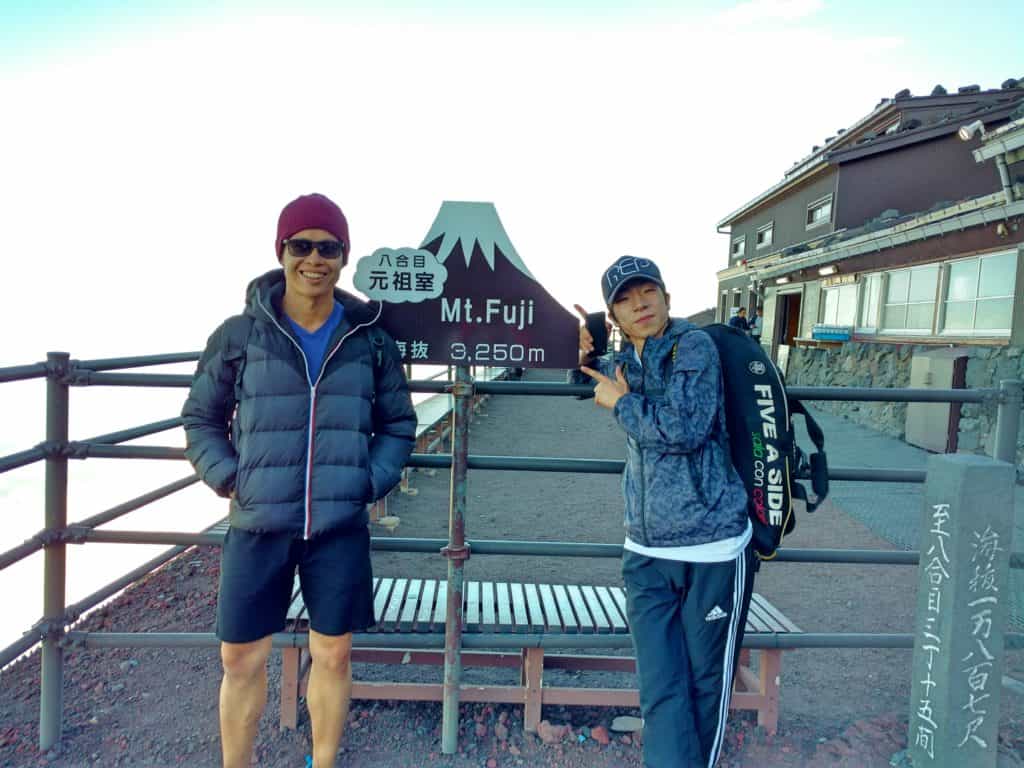
And finally at our accommodation for the night: Fujisan Hotel!
The Fujisan Hotel is one of the mountain huts that are located at the Eighth Station. There’s no shower facilities, but you do get to sleep overnight and dinner (if you opt for dinner when making your reservation).
Tips: Reserving spaces in mountain huts
It’s necessary to reserve a spot in a mountain hut if you’re planning to take a break (which you should) during the climb. Camping overnight is strictly not allowed.
Bookings can be made either by phone or online.
But for some mountain huts (like mine), online reservations might work only for Internet users with Japanese domains.
If you’re a foreign guest, your best option is to make your reservation over the phone. If you don’t have a Japanese mobile number during your trip, download the Skype application on your smartphone and sign up for one of the calling plans.
This option is much cheaper than buying a SIM card and a mobile plan directly from a Japanese mobile service provider. For instance, for 100 minutes of outgoing calls to Japanese landlines and mobile numbers, you pay only US$3.99 each month! The only catch is that you need good WiFi connection to make calls on Skype.
On the other hand, the SIM card itself (excluding the mobile plan) would cost around US$22 if it is purchased from a local telecommunications service provider.
Alternatively, borrow a phone from your Japanese friend and call the mountain hut to make a reservation.
We got there right before 6pm, so we had at least seven hours to wind down and catch up on some much needed sleep after dinner.
Paying fees for use of restrooms
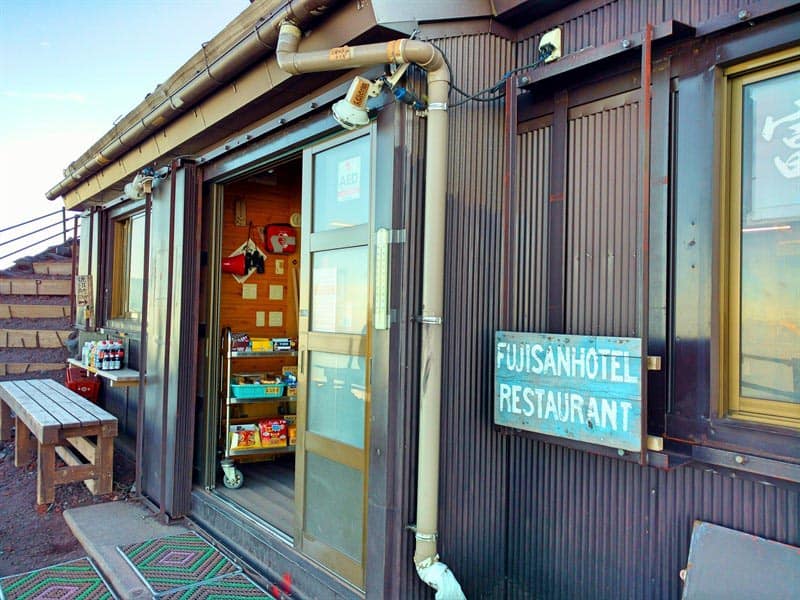
Unfortunately, all climbers are required to pay a small fee of 200 yen to use the restrooms.
Some mountain huts may not have toilet facilities themselves, so you may have to go to the nearest one and pay to use it.
Only cash is accepted as a form of payment.
Water for shower and hand washing is not available
Since water is very precious on the mountain, taking a shower or washing your hands is not possible.
So, bring along a large bottle of water and hand sanitizer!
Refreshments, snacks, and meals provided at the mountain huts are expensive
Expect to pay about 400 yen for a small bottle of warm green tea or water, which you could otherwise find in supermarkets for only 120 yen or even less.
Also, a fairly normal sized dish of curry rice at our mountain hut costs 1,000 yen. But for the same size, it would probably cost only around 550 yen elsewhere in the city.
So, buy some drinks and snacks, and stock them up first before leaving for Mount Fuji!
1 USD = 111 yen
DAY 2: Climbing Fuji
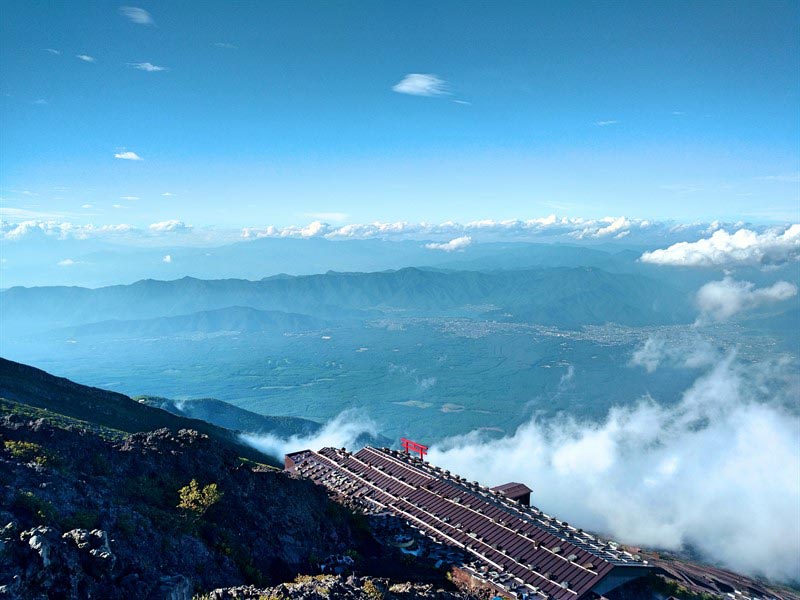
Because of how crowded the route was, we decided to wake up by 2 am so that we could get to the top of Mount Fuji in time to watch the sunrise (though there were already many climbers who were awake way before then).
It takes only about an hour and a half to climb from the Eighth Station to the top!
During the ascend to the top, the winds were so strong that we had to try to maintain our balance and focus.
At that moment, we decided that taking pictures in the dark isn’t worth the risk of having our smartphones or cameras being possibly blown away by the strong winds.
Prepare for the cold weather
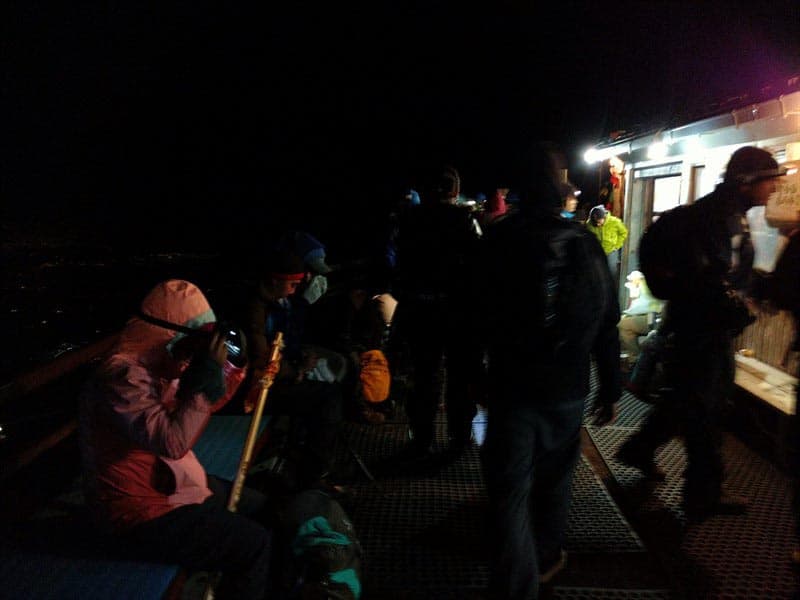
Pack enough warm clothing for two days. If you want to pack as light as possible, I’d say bringing a winter jacket, a sweater, beanie and perhaps a scarf too should suffice.
If you have an insulated winter jacket, you could easily replace the sweater with a fleece shirt! That way, your bag would be lighter.
Bring a headlamp or flashlight
Since the ascend from your mountain hut will start at around 2.30 am (or earlier) on the next morning, it will probably be too dark to see anything.
To avoid rough obstacles and getting injured or lost, bringing your headlamp or flashlamp along is essential. I’d recommend attaching them to your headgear for your own convenience.
We Made it!
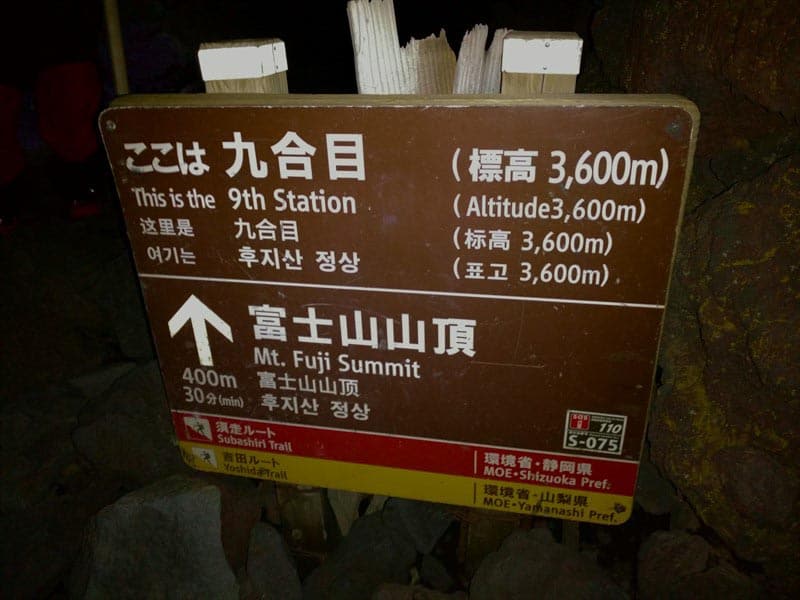
Soon after, we arrived at the Ninth Station!
14 hours after the hike commenced, we were finally at the top!
To our surprise, we arrived early enough to be able to get a great spot for watching and capture photos of the sunrise.
It wasn’t until around 5.15 am that we first saw the sunrise.
Sunrise on Mount Fuji
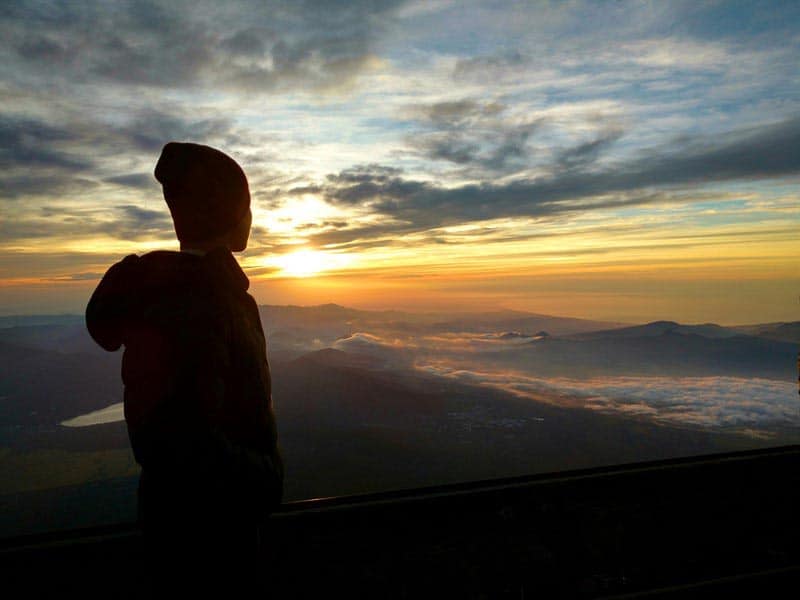
As cliche as it may sound, watching the sunrise from one of the iconic sites of the Land of the Rising Sun itself is definitely one of the best highlights of traveling in Japan.
Given the unpredictable weather conditions of that week, I guess we were lucky to have the climate end up in our favor!
At around 6 am, we started the descend to the Fifth Station. Although it lasted for only half of the time required for the climb up, the descend was actually more challenging and risky than we thought.
As you can see (from above), there’s no pole on the side available for holding onto, and no rocky steps to ease and facilitate the process of descending.
But as long as you’re careful and patient, you should be able to keep your balance and avoid slipping and getting injured while descending.
Three and a half hours later, we were back at the Fifth Station!
Best time for climbing Mount Fuji
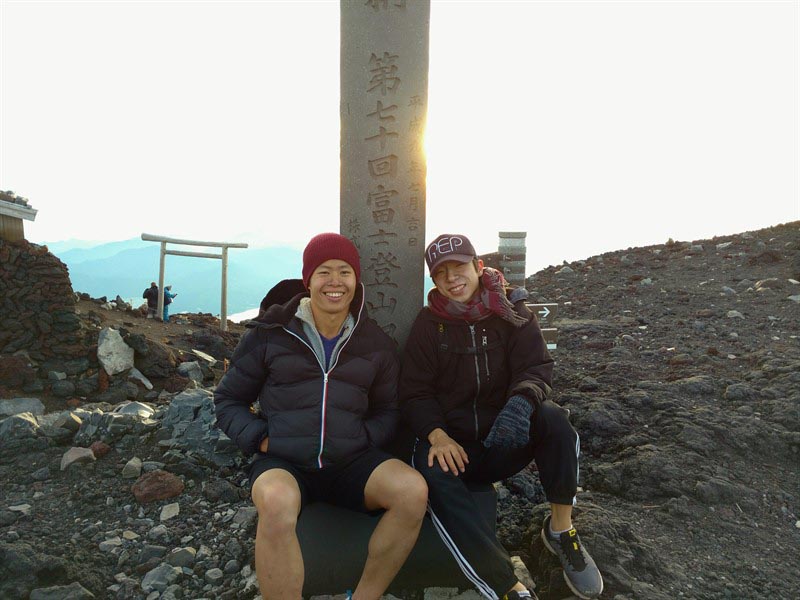
Although the mountain peak is open to hikers from July 1 to early September, the best time to climb is from the end of July to late August. This is due to the relatively stable weather conditions.
However, wind conditions vary, and you might experience temperatures close to zero or even lower while ascending or descending.
Avoid climbing on Fridays and Saturdays (if possible)
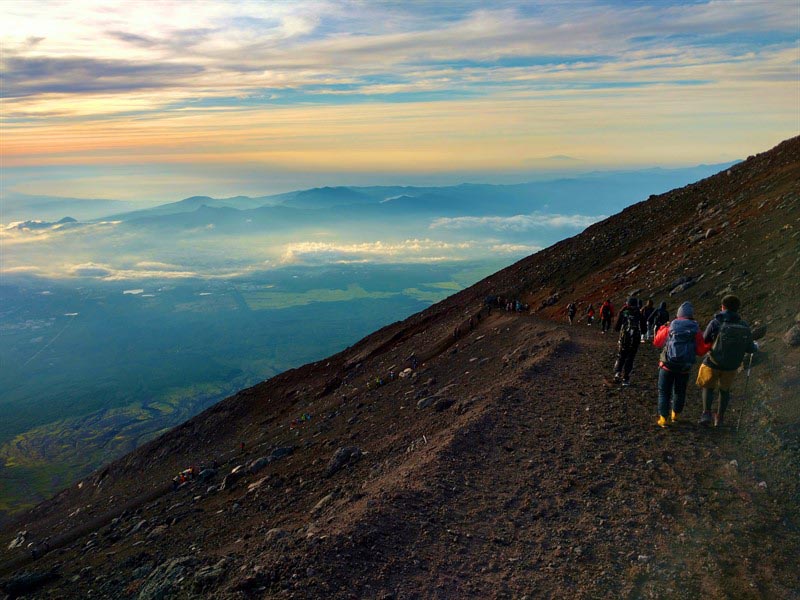
Since it’s the peak times of the week, it can get very crowded! Even if you wake up early enough on the next morning to set off, there’s a high chance that many climbers are already way ahead of you.
Some mountain huts (like mine) also charge higher prices for the weekend.
No official entrance fees to climb Mount Fuji
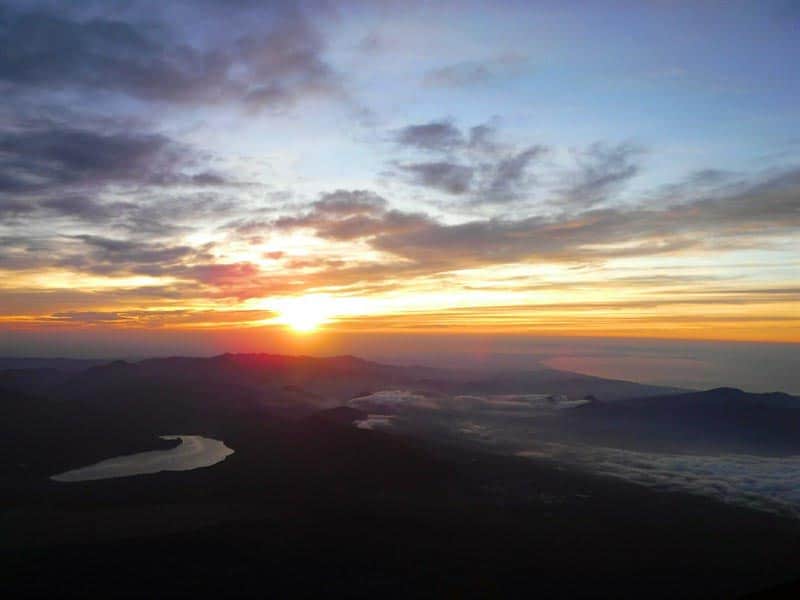
There is no entrance fee for climbing Mount Fuji.
The only things you need to pay are: round-trip transportation to and from Mount Fuji, overnight accommodation at one of the mountain huts, and optional fees (for use of restrooms, and buying snacks and refreshments).
Note: If your mountain hut is located on the 8th Station, it takes only about 90 minutes to climb to the top.
Access points to Mount Fuji
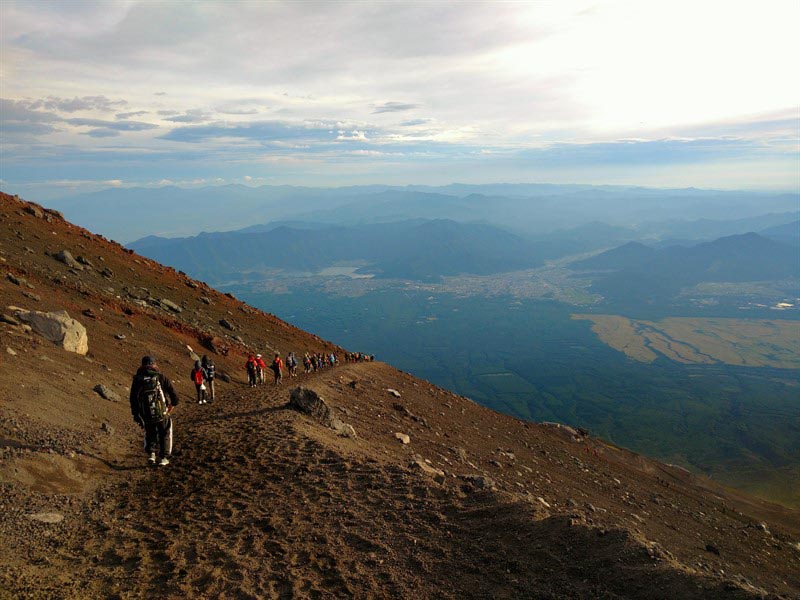
As mentioned previously, there are 4 main trails leading you to the top of the peak: Yoshida Trail, Fujinomiya Trail, Gotemba Trail, and Subashiri Trail.
No matter which trail you take, you need to reach the 5th Station first since it’s the starting point for the ascend.
Yoshida Trail (Fuji Subaru Line)
- Take the highway bus from any of the following locations:
- Shinjuku Expressway Bus Terminal (JR Shinjuku Station)
- Yokohama Station
- Tama Plaza Station
- Center-Kita Station
Fujinomiya Trail
- Take the mountain climbing bus from any of the following locations:
- Fuji Station
- Fujinomiya Station
- Mishima Station
- Shinfuji Station
- Shizuoka Station
- Or take the mountain climbing bus from:
- Kawaguchiko Station
Gotemba Trail
- Take the mountain climbing bus from:
- Gotemba Station
Subashiri Trail
- Take the mountain climbing bus from any of the following locations:
- Gotemba Station
- Shin-matsuda Station
Medical stations are onsite

Whether you’re suffering from altitude sickness or injuries sustained during the climb, don’t worry!
There’s always medical centres available especially on the Seventh and Eighth Stations.
Directions to Shinjuku Expressway Bus Terminal
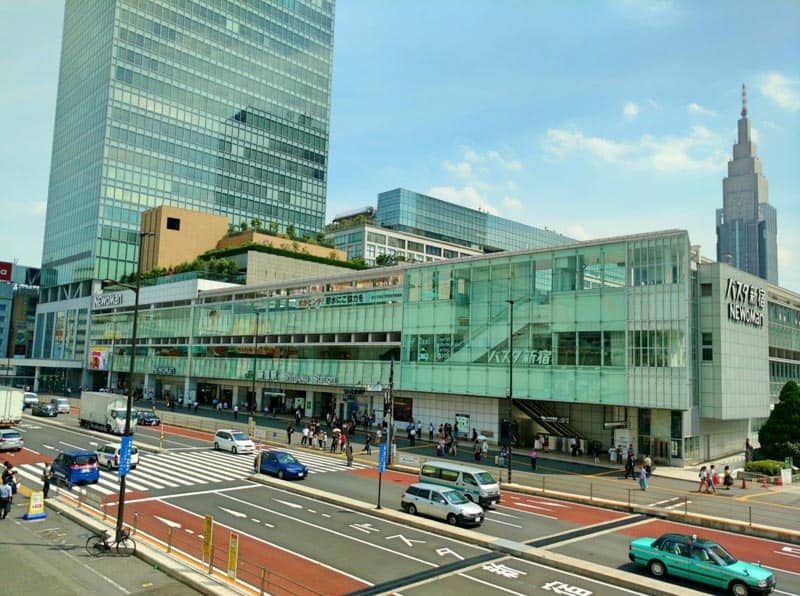
If you’re taking the Yoshida Trail and planning to get to the Fifth Station by the highway bus, you can take it from the Shinjuku Expressway Bus Terminal.
Take the JR train to Shinjuku Station first.
Once you arrive at the JR Shinjuku Station, head to the South exit. Just walk to the NewoMan building located right across the street (as seen above).
Then, make your way to 4F (4th floor). You will see signage that direct you to the Bus Terminal.
And there you go! All the information to make climbing Mount Fuji a success.
Have you climbed Mount Fuji? If you have some tips to add, leave them in the comments below.
Read More:

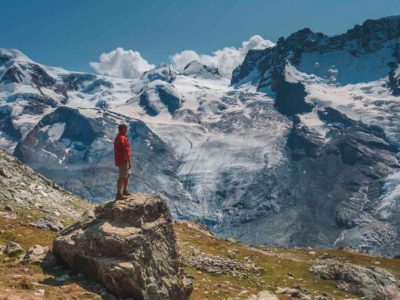
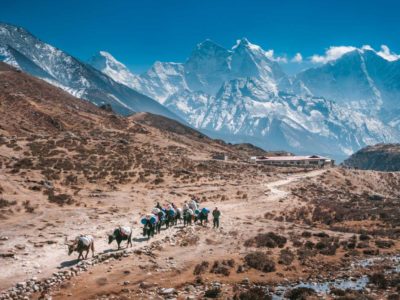
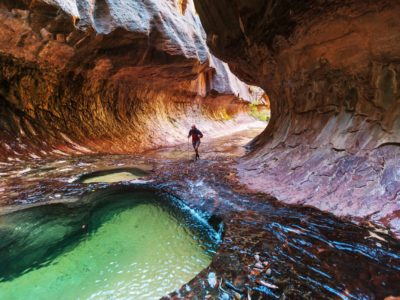
If you can find a place to stay near fifth station, it is a very doable hike in half a day. Start 6am and summit around 11. Walk the rim and you’re back down by 3.pm. The huts are not fun. People are coming and going all night and you’re on top of everyone. And then the Americans come in yapping and are so loud. Some come in to warm up even though they aren’t supposed to. I’m American and it was really an eye opener to see how rude and entitled people think they are.
Hi!
What’s the skype number of the mountain hut you stayed in the 8th station? Thanks in advance.
I love adventure trips a lot,so i’m planing a trip to Fuji.After reading this i’m sure this would be a memorable moment in my life.Thanks for sharing information about Mount Fuji.
I climbed Mt Fuji in July 1960 while I was there in the Navy. We started climbing at 4PM got to the top for sunrise. The decent was about 1 1/2 hours on the West side in the course sand (you take a step and slide 5-10 feet) used my Fuji stick as a rudder. This is my fondest memory of my three years in Japan.
i wish i could climb the fuji mountain some day. it so beautiful
Thanks a million for the article. It’s an excellent overview and the pictures are great.
Do many people do the round-trip in one day instead of staying in the guts and secondly just to be 100% clear as I’ve got stung before, a permit I smit required here?
Cheers
Tommis
l love travel and really hope i would climb the fuji mountain some day. Just wish i could afford to go there now. It’s so beautiful.
Very great post. Just some info: do you have any travel agency to organize the tour?
If you want to start from a lower station what is the best way to do it? Or it is not worth the effort?
Hi! Thank you for this great post! Question – After the climb, how did you guys get back to Tokyo? Did you pre pay for a bus ticket back or were you able to buy tickets day of at the 5th station to return back to Tokyo? We will be climbing and staying in a hut in early July and I am working on our travel arrangements. We want to take the bus, and I would love to go ahead and make arrangements if possible. We are so excited! Thank you!
Thanks for sharing! Very informative and useful!
Thanks for posting this. I’m looking to perhaps be more adventurous, and maybe this is a good way to conquer my fear of heights.
How far in advance should we book a mountain hut?
Hi!
What’s the skype number of the mountain hut you stayed in the 8th station? Thanks in advance.
Great to see your nine stations and two days of climbing mount Fuji . It is not a cup of tea to climb on the top of the mount Fuji .
SAUDI: I’d say ages 8 to 10 years old are more appropriate but if your kid is fit and active enough the hike is definitely do-able.
VICTORIA @THEBRITISHBERLINER: Exactly! Hope you had a blast in Bali 🙂
GOLDEN TRIANGLE TOUR 5 NIGHTS 6 DAYS: Thanks!
Looks like a really great hike. I am going to try this someday. I always wanted to go to Mount Fuji. Very good guide.
Do you think its a good plan to go there with 7 years kid?
Amazing article I never knew there was so much to Mount Fiji unbelievable!!!jj
Wow. It looks so amazing.
Thanks for this well explained guide about Mount Fuji.
‘Looks great. What an achievement and really great views. You must be pretty proud!
You’re right though, coming down the mountain is actually more dangerous than people imagine! I climbed up a live volcano in Bali a few years ago. I found the trek going up pretty stressful in the dark, and coming down was even worse, ‘cos I stumbled down some rocks a few times, and my kneecaps felt as if they were about to pop!
This has been on my bucket list for a while. Thanks for making it seem more possible.
Maybe 2018 is the year 🙂
Great view. Thanks
Wow! seems like one heck of an adventurous trip. Some really helpful tips out there on the blog. Amazing pictures. Thanks for sharing!
Great post, You shared a well explained guide about Mount Fuji. Its really so good place for hiking adventure. Photos which you captured of your trip are so good. thanks for that complete guide about Monut Fuji.
Really a complete guide to climb the Mount Fuji.
Nice experience, except for the amount of people but I guess that is always included when travelling in Japan 🙂